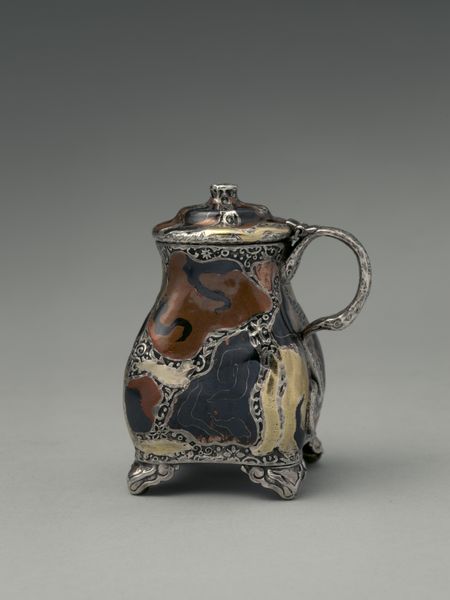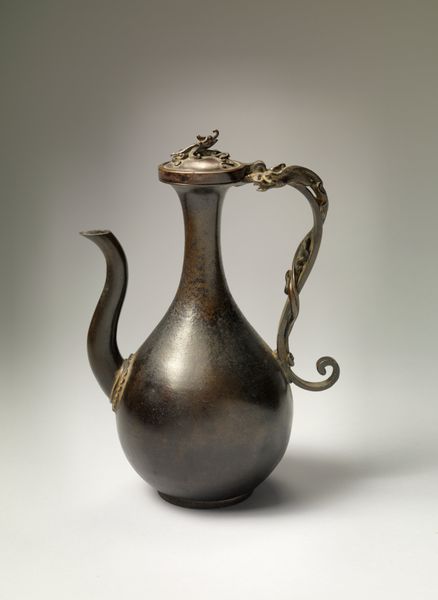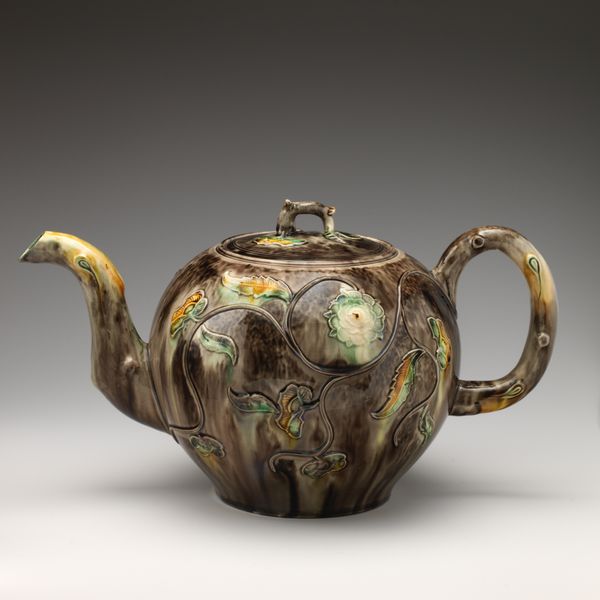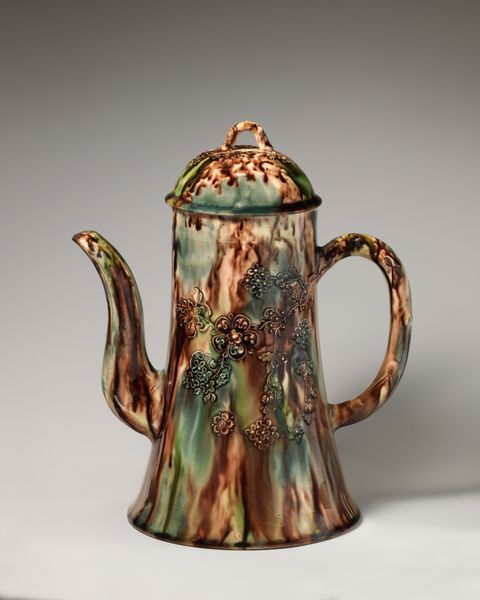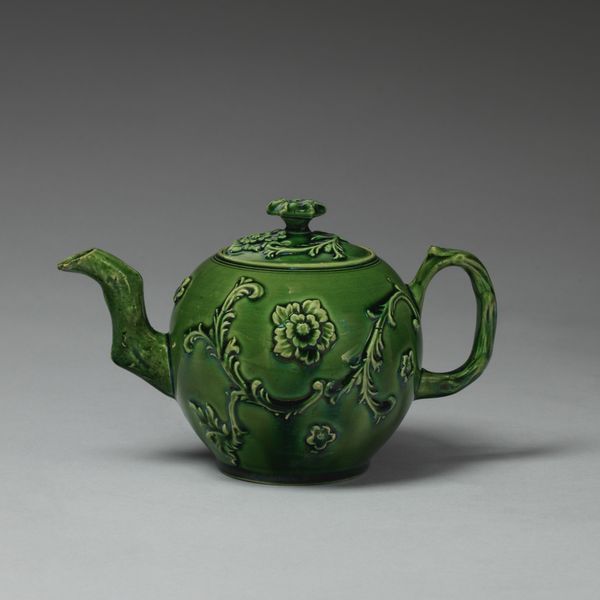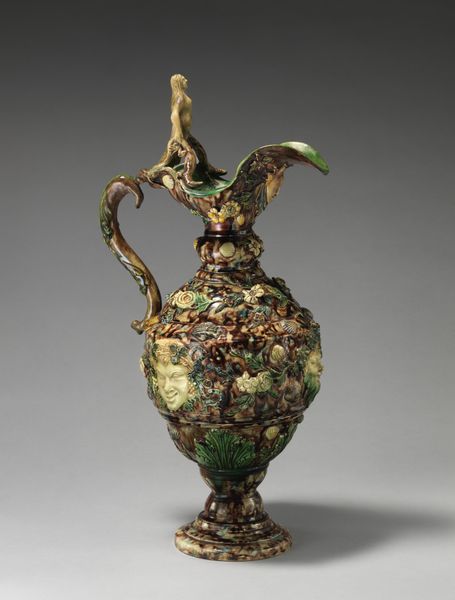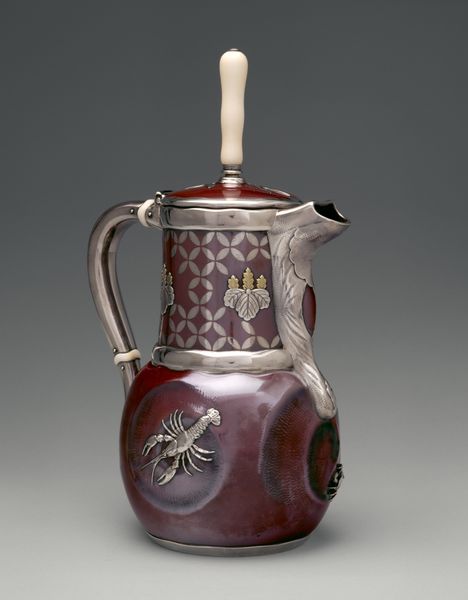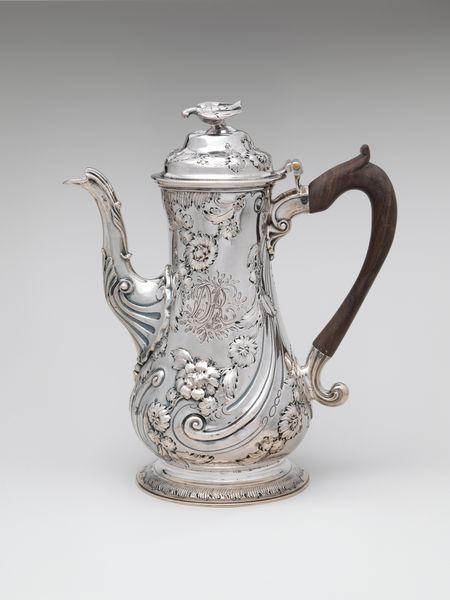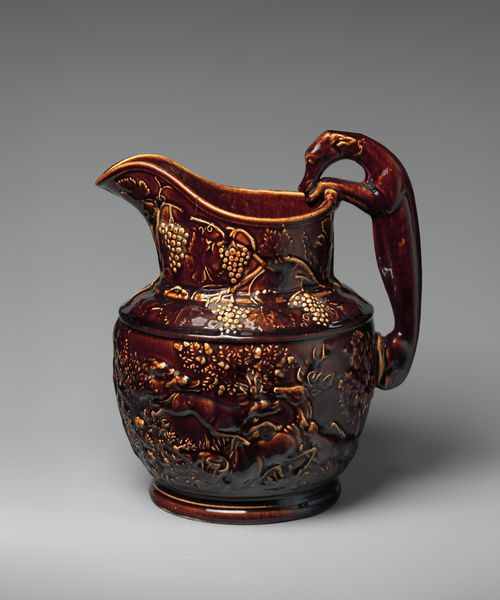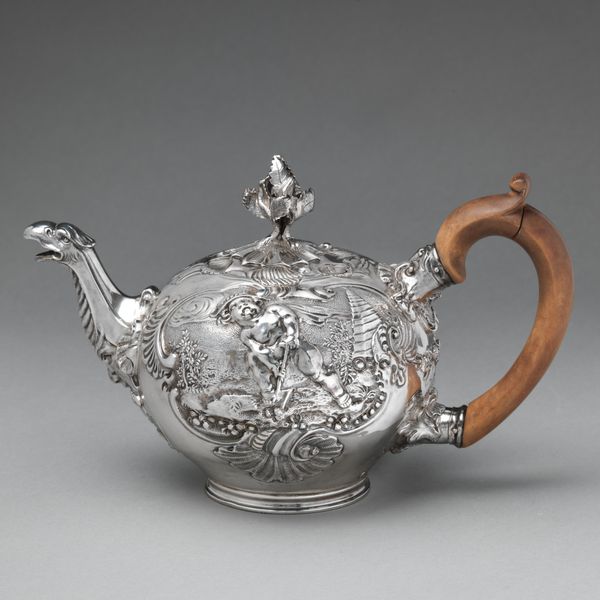
ceramic, sculpture
#
ceramic
#
stoneware
#
sculpture
#
decorative-art
Dimensions: Height: 5 1/4 in. (13.3 cm)
Copyright: Public Domain
Editor: We’re looking at a ceramic milk jug from the 18th century, attributed to the Whieldon type. It’s got such an interesting texture and colour, a marbled effect almost. The grapevine design gives it a natural feel. What do you see when you look at this piece? Curator: I see an object deeply embedded in the social history of the 18th century. These seemingly simple objects speak volumes about class, trade, and evolving aesthetics. Stoneware like this became increasingly popular as global trade expanded. The grapes evoke Bacchus and therefore luxury. The design served to align the user with notions of wealth. Editor: So, it's not just a container, it is a statement? Curator: Precisely. It's fascinating to consider who would have owned and used such an object. Was it displayed to impress visitors, or used in intimate family gatherings? The details provide clues about social dynamics of the period. Consider also where it was made and sold and under what economic conditions. Editor: I didn't think about how class plays a part in how pottery developed and was consumed in history. How did art institutions at the time see this artwork? Curator: Back then museums did not exist, or if they did, they certainly would not display pottery! This type of artwork shows the influence of wealthy clients and the growth of a middle class that imitated the elites in the British empire. So this "jug" shows economic changes that developed into our world. Editor: It's incredible to think about how such an ordinary object can reveal such profound socio-political contexts. It makes you realize art is never created in a vacuum. Curator: Exactly! It reminds us to look beyond the surface of any artwork. This small milk jug invites us to see the complex web of relationships shaping its creation, use, and legacy.
Comments
No comments
Be the first to comment and join the conversation on the ultimate creative platform.
